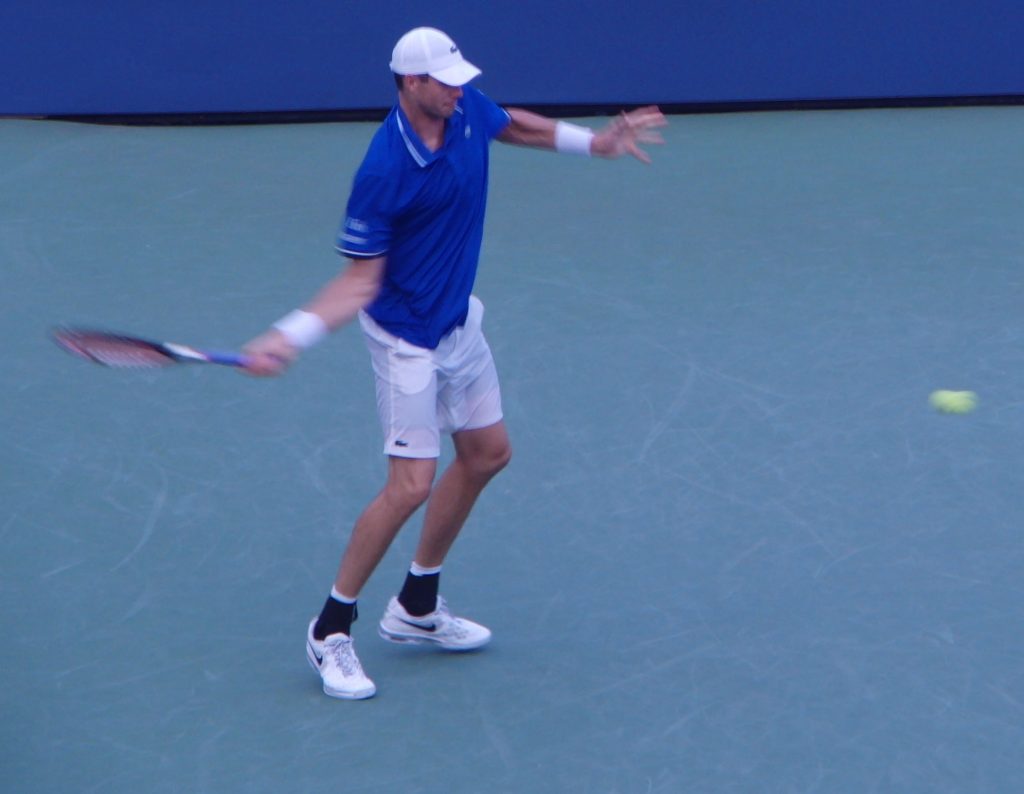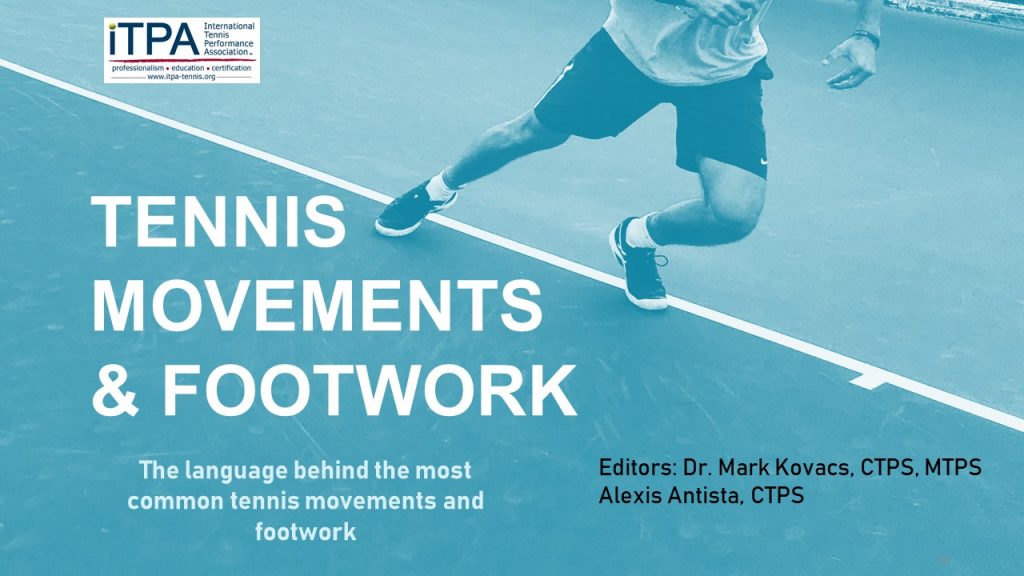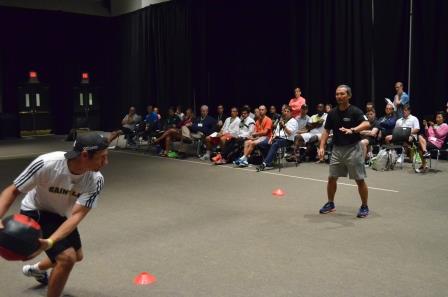MEMBER LOG IN
Categories
Links
Category Archives: Movement
Lateral Acceleration: Djokovic, Nadal and On-Court Training
by Doug Eng EdD PhD, MTPS and Bharathan Sundar
Tennis movement can be characterized by primarily short lateral bursts over typically 3-4 m initiated by a reactive split-step. Movement can be improved by: 1) strength-speed training, 2) technical training, 3) and anticipation training. Kovacs (2009) summarized the importance of lateral movement training. This article will address on-court lateral acceleration with regards to strength-speed and technical training. Lateral acceleration depends on unilateral movement, or specifically, the outside leg to enhance ground reaction force (GRF).
Click below to read the full pdf!
Posted in Lateral Movement, Movement, Speed & Agility, Training
Leave a comment
Modern Tennis Movement: Learning from Rafael Nadal
PART I – CHANGING PHYSIOLOGY, DEMANDS OF MOVEMENT AND THE CASE STUDY OF NADAL
by Doug Eng, EdD PhD CSCS CTPS MTPS
Traditional tennis movement has been taught as involving quick, small, shuffle and adjustment steps. The traditional clay court game has been taught with additional sliding movement involving long, grinding points. However, today’s matches don’t involve as many long rallies as 40 years ago. Research on modern tennis movement shows today’s game has some different characteristics. Points are shorter and faster creating greater demands on speed, agility and quickness. Continue reading
Posted in Movement, Training
Leave a comment
TENNIS MOVEMENT & FOOTWORK: The Language Behind The Most Common Tennis Movement & Footwork
The purpose of this booklet is to provide the tennis industry with consistent language around the major tennis movements. As the leading tennis-specific fitness and sport science association, the International Tennis Performance Association (iTPA) determined that some major challenges exist throughout the global tennis industry in how tennis movement is communicated, and therefore how it is taught. Up until this point a lack of consistency has existed to describe the most common movements seen on the tennis court.
Standardized terminology is needed to allow for better communication between tennis coaches within tennis centers and academies as well as communication among other individuals that test, train and rehab tennis athletes. Developing a simple common language is paramount for easier communication among all individuals involved in the development of tennis players at all ages, stages of development and levels of play. Continue reading
Posted in Dr. Mark Kovacs, Movement, Speed & Agility
Leave a comment
Improving Movement Capabilities While Maintaining Muscular Endurance
By Jonathan Borsky and Dr. Mark Kovacs
Ashton Eaton, winner of two Olympic decathlons, has been quoted as saying that tennis is the “next most athletic sport,” one that requires an interplay of technique, agility, and mind-body awareness. Continue reading
Posted in Movement
Leave a comment
Agility and Coordination Exercises for Tennis Players Aged 6-18
by Oliver Stephens, iTPA Master Tennis Performance Specialist, PTR Master of Tennis (Performance and Development)
As per the iTPA CTPS workbook and study guide: “Tennis players make an average of four directional changes per point, but can range from a single movement to more than 15 directional changes on a very long point.”
This of course means that Agility Continue reading
Posted in Drills, Movement, Speed & Agility, Training
1 Comment
Learning the Tennis Forehand
By Joshua Colomar and Mark Kovacs, PhD, FACSM, CSCS*D, CTPS, MTPS
Although the forehand is one of the most important strokes in the game of tennis, the research data on the stroke is less than the data seen on the serve. It is likely due to the more varied methods Continue reading
Posted in Biomechanics, Forehand, Movement, Power, Sports Science
Leave a comment
Lateral Training Exercise Video for Younger Tennis Athletes: by Dean Hollingworth, CTPS
Guest Inner Circle Video Post on Lateral Training Exercise for Younger Tennis Athletes iTPA Certified Member Dean Hollingworth, CTPS. Continue reading
Single Leg Stability Training for Groundstrokes – by Oliver Stephens
This guest post by CTPS and MTPS Certified Member Oliver Stephens is a great read.
If you observe modern tennis played at all levels from Intermediate Juniors to High Level Professionals, you will notice how the better players often seem to be more stable and have better balance than their opponents do.
The dictionary definition of stability contains the following: Continue reading
Posted in Article, Movement, Sports Science, Stability Training, Tennis Strokes
Leave a comment
Presentation Slides From Performance Lectures at 2014 Tennis Medicine & Performance Conference
On July 19th and 20th, 2014 the iTPA and STMS combined to host the 2014 Tennis Medicine & Performance Conference in Atlanta, Georgia (USA). This great 2 day education event brought together experts in all aspects of tennis medicine, science, performance training and coaching. As many of the iTPA family could not attend in person we are providing some resources for our members in over 24 countries. In this post you will see a selection of the performance focused presentation slides.
If you are interested in viewing 10 of the most well-attended sessions during the conference, please visit the link below with the ability to subscribe to over 7 hours of video from the conference 2014 Tennis Medicine & Performance Conference Videos



